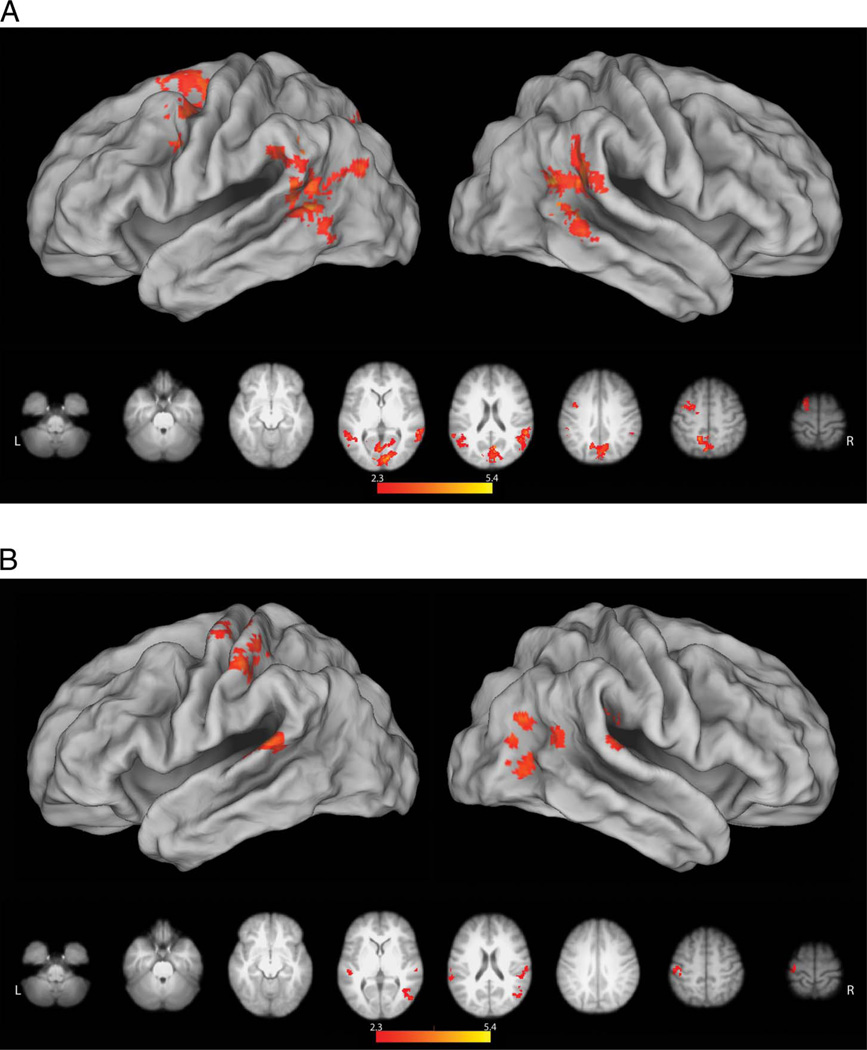Figure 3.
Planning and execution phase responses in the MT. Here and in subsequent figures, significant results (z > 2.3, p = .05. with clusterwise correction for multiple comparisons) were mapped to a 3-D brain using CARET’s Population-Average, Landmark- and Surface-based atlas using the Average Fiducial Mapping algorithm (Van Essen, 2005). (A) Relative to resting baseline, both types of action planning were associated with significant increases in occipital cortex, extending dorsally into the medial superior parietal lobule, left premotor cortex (dorsal and ventral), bilateral TPJ, and cMTG. No regions exhibited selective responses for Grasp or Reach planning during this planning (premovement) phase. (B) During movement execution, grasp-related increases in activity were found near the intersection of the IPS and postcentral sulcus (i.e., the functionally defined aIPS) contralateral to the hand involved. This cluster extended along the lateral convexity of the postcentral gyrus and into left precentral gyrus. These differences likely reflect the increased motoric demands of shaping the hand to engage the object and/or sensory feedback associated with these movements as well as object contact. Increased sensory stimulation may also account for the finding of bilaterally increased parietal opercular activity (putative secondary somatosensory cortex). We also saw a lateral increase in activity within rostral right LOC extending into the cMTG that is likely attributable to greater visual processing of object structure and/or motion in the grasp condition.

